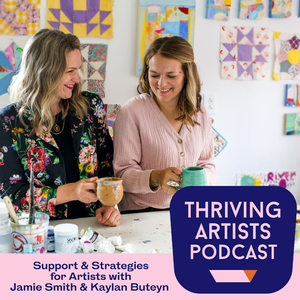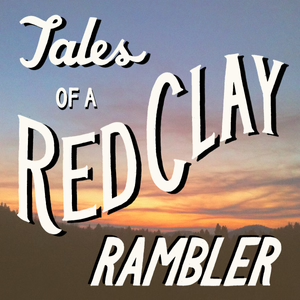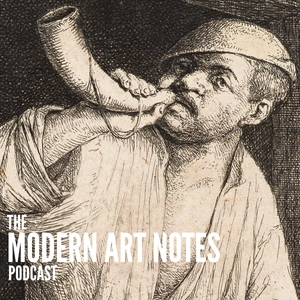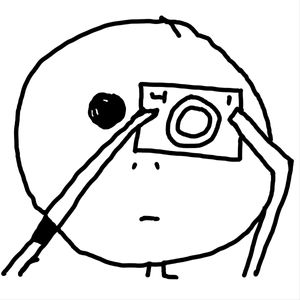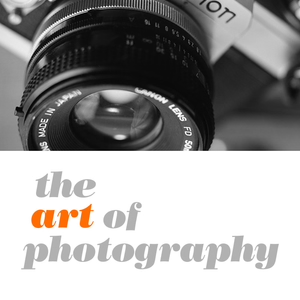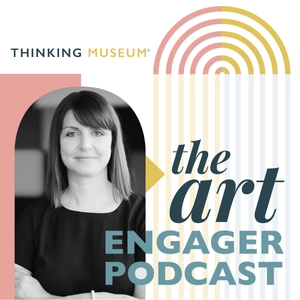
Making space and time for slow looking
01/19/23 • 20 min
1 Listener
I’m talking today about making space and time for slow looking.
So if you've been listening to the podcast for a while, you'll know that I've been practising the art of slow looking for a long time now the last 11/12 years. And it's very much a personal practice and also something that I use with groups of all ages with a variety of objects, artworks, situations and places.
But why is it so important to incorporate slow looking into your guided tours, educational programmes and art experiences?
In today's episode you'll hear:
- who inspired my love of slow looking when I first got started in 2011
- myth-busting: about what slow looking is and how it works.
- how slow looking is the key to engagement
- 3 main reasons why it's important to make space and time for slow looking
- how you can incorporate it into your guided tours, your educational programmes your online session, even if you think you don't have the time or the space
- the key benefits to including slow looking onto your programmes - whatever format they take
If you're not making space and time for slow looking, then you're really missing a trick - listen to today's episode about making the space and time for slow looking and embed it as a fundamental part of all your programmes.
Links
Episode 2 - What is slow looking (and how can I get started?)
Episode 7 - How to Develop a Daily Slow Looking Practice
Free resource - Thinking Routines for Observation
Free guide - how to look at art (slowly)
Join the Slow Looking Club Community on Facebook
Curated newsletter by Claire Bown
I’m talking today about making space and time for slow looking.
So if you've been listening to the podcast for a while, you'll know that I've been practising the art of slow looking for a long time now the last 11/12 years. And it's very much a personal practice and also something that I use with groups of all ages with a variety of objects, artworks, situations and places.
But why is it so important to incorporate slow looking into your guided tours, educational programmes and art experiences?
In today's episode you'll hear:
- who inspired my love of slow looking when I first got started in 2011
- myth-busting: about what slow looking is and how it works.
- how slow looking is the key to engagement
- 3 main reasons why it's important to make space and time for slow looking
- how you can incorporate it into your guided tours, your educational programmes your online session, even if you think you don't have the time or the space
- the key benefits to including slow looking onto your programmes - whatever format they take
If you're not making space and time for slow looking, then you're really missing a trick - listen to today's episode about making the space and time for slow looking and embed it as a fundamental part of all your programmes.
Links
Episode 2 - What is slow looking (and how can I get started?)
Episode 7 - How to Develop a Daily Slow Looking Practice
Free resource - Thinking Routines for Observation
Free guide - how to look at art (slowly)
Join the Slow Looking Club Community on Facebook
Curated newsletter by Claire Bown
Previous Episode

7 Ways to Refresh your Practice in 2023
Today I’m sharing a variety of different ways to refresh your practice for 2023 so you don’t get stuck in a rut.
Are you looking forward to designing and leading guided tours, art experiences, educational programmes in 2023?
If, however, you’re not sure about your answers to those questions, or about how you feel about the coming year, then it’s definitely time to shake things up a little.
If you’re feeling tired, jaded or uninspired, then it’s definitely time to make some changes.
It’s a wonderful thing to do at any time of year, but especially at the start of a new year.
If you continue to do things exactly as you've always done them, then you might end up feeling like you’re on auto-pilot, or start feeling a bit restless or even bored.
It’s tempting to stick to the tried and tested formula - especially if it worked well last year - but making a few simple changes to your practice and the way you do things might help you to rediscover a passion and enthusiasm for your work.
And this renewed enthusiasm will of course come across to your participants and might even be contagious.
This episode is for you even if you’re not feeling stuck, perhaps you’re more than happy with the way you do things. But you may hear something here that you’d like to try out at some point this year. And your audience will thank you for it!
So here are 7 different ways you can refresh your practice for the coming year. This episode is not about sweeping changes, this is about small changes that will have a big effect. Enjoy!
Links
The Art of Questioning - A 45 minute self-paced masterclass taking you step-by-step through the process of improving your questioning technique. Full of takeaway tools and exercises to help you consistently create, sort & evaluate your own questions.
Other episodes to help you refresh your practice:
Episode 29 - How to Develop a Reflective Practice
Episode 52 - From Good to Great: How to Develop and Grow as an Educator
Episode 53 - How to Define your Personal Facilitator Style
Episode 60 Learn, Unlearn, Relearn
Episode 77 - How to Show up in a Resourceful State
Episode 64 - 4 Powerful Questions to Supercharge your Art Experiences
Join the Slow Looking Club Community on Facebook
Download the NEW resource - how to look at art (slowly)
Curated newsletter by Claire Bown
Next Episode

Engaging with Teens in the Museum
What words come to mind when you hear the word ‘teenager’? Or the word ‘adolescence’?
Do you love working with teens or feel a little apprehensive?
I’ve recently been facilitating some team trainings in museums about how to engage with teenagers and so I’ve been thinking a lot about the best ways to work with teens. It's also a subject I get asked about a lot.
Here are some tips and ideas for better ways to engage with teenagers in the museum on your guided tours and programmes.
I'm exploring:
- Why our thoughts shape our attitude towards teens
- Seeing teenage behaviour through a developmental lens
- Positive reasons for working with teens
- Creating an inclusive, warm and friendly atmosphere
- The importance of shared ownership
- The role of open-ended questions and careful listening
- Reading the group and avoiding false clues
- Why less is more
- And why teens like to discuss themes of global significance
Links
Join the Slow Looking Club Community on Facebook
Download the NEW resource - how to look at art (slowly)
Curated newsletter by Claire Bown
5 harmful myths and 5 inspiring truths about teenagers - Big Think
Episode 44 - The 4 elements of a great introduction
If you like this episode you’ll love
Episode Comments
Generate a badge
Get a badge for your website that links back to this episode
<a href="https://goodpods.com/podcasts/the-art-engager-245896/making-space-and-time-for-slow-looking-27871593"> <img src="https://storage.googleapis.com/goodpods-images-bucket/badges/generic-badge-1.svg" alt="listen to making space and time for slow looking on goodpods" style="width: 225px" /> </a>
Copy
